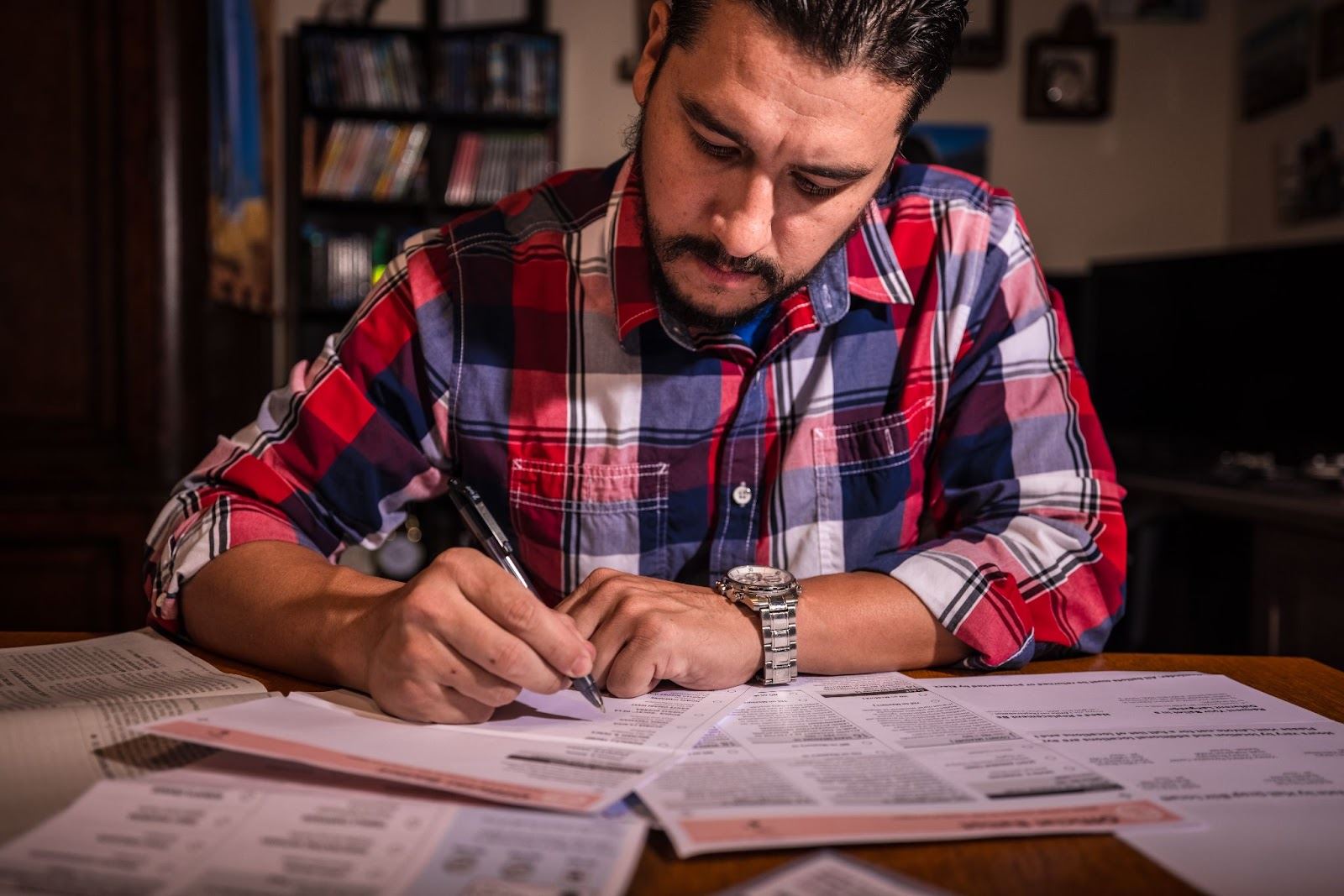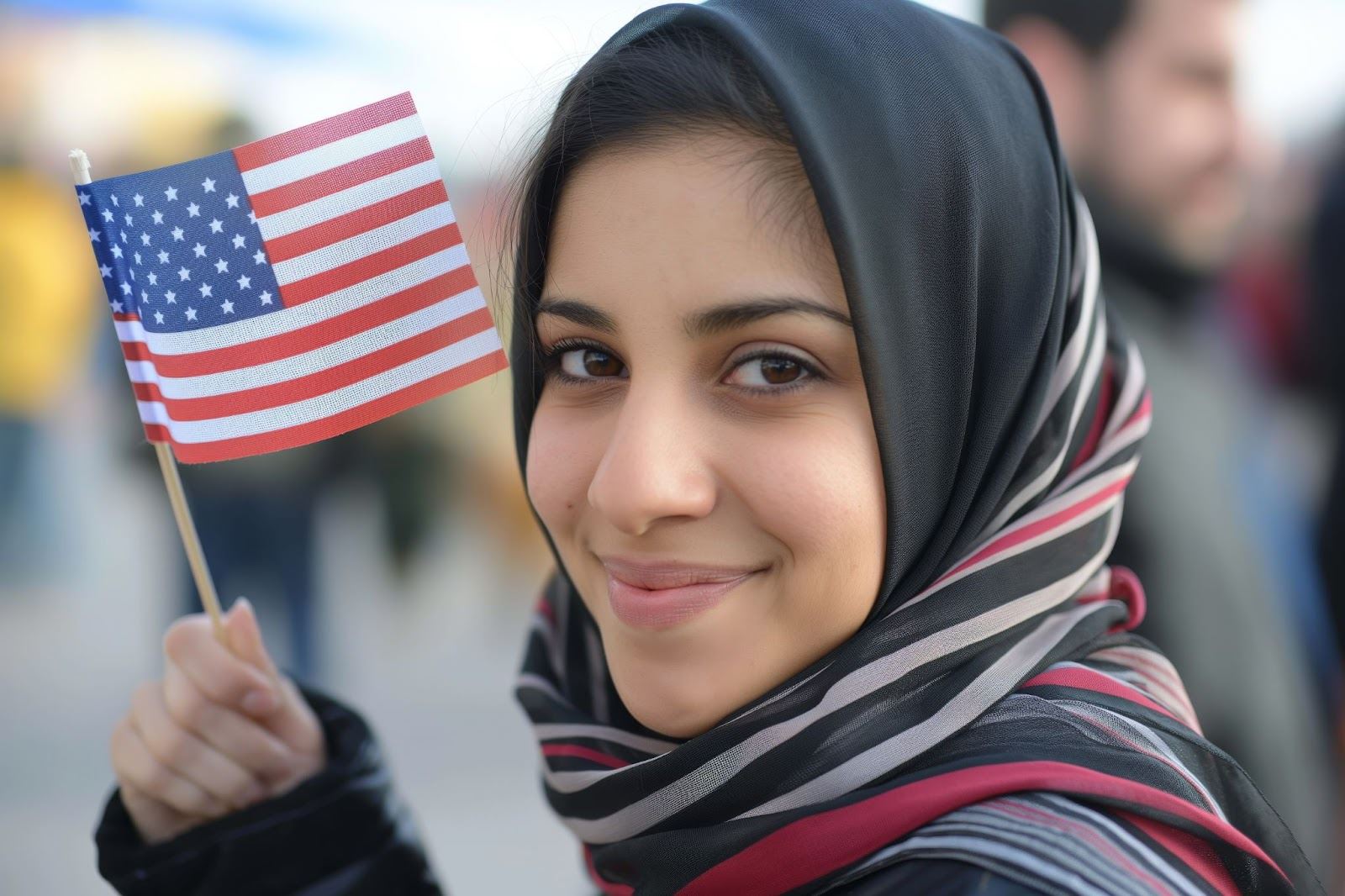Becoming a U.S. citizen is a monumental achievement that opens doors to numerous opportunities and rights. It grants you the ability to vote, access to federal jobs, and the security of knowing you have a permanent place in the country. This pivotal step enhances your sense of belonging and solidifies your legal standing, giving you peace of mind and a sense of pride.
However, the path to U.S. citizenship can be a winding and challenging journey. The application process involves various steps, from ensuring eligibility to navigating extensive paperwork and preparing for interviews and tests. Each phase requires careful attention to detail and a thorough understanding of the requirements.
That’s where this blog comes in. We aim to demystify the citizenship application process and provide you with actionable tips to make your journey as smooth and successful as possible. Whether you’re getting started or already in the midst of applying, you’ll find valuable insights to guide you every step of the way.
Understanding the Eligibility Requirements
Before you embark on the citizenship journey, it’s crucial to grasp the eligibility criteria. Knowing these requirements can save you time and help you prepare effectively.
General Eligibility Criteria
To apply for U.S. citizenship, you need to meet several key requirements. Generally, you must be at least 18 years old, have a valid green card, and demonstrate continuous residence and physical presence in the U.S.
Residency Requirements
You must have lived in the United States as a lawful permanent resident for at least five years (or three years if married to a U.S. citizen). During this period, you must not have left the U.S. for trips longer than six months.
Good Moral Character
Proving good moral character involves demonstrating a clean criminal record and abiding by U.S. laws. Any serious offenses or repeated legal issues could jeopardize your application.
English Language Proficiency
Applicants must show the ability to read, write, and speak basic English. This ensures you can participate fully in American civic life and understand essential laws and responsibilities.
Knowledge of U.S. History and Government (Civics Test)
You’ll need to pass a civics test that covers fundamental concepts of U.S. history and government. Study materials are readily available, and preparing thoroughly is essential for success.
Exceptions and Accommodations
Certain applicants might qualify for exceptions or accommodations based on age, disability, or long-term residency. For instance, older applicants with many years of residency might be exempt from the English test. It’s important to check if you qualify for any special considerations.
By understanding and meeting these eligibility requirements, you set a strong foundation for your citizenship application. Prepare thoroughly, ensure you meet all criteria, and you’ll be well on your way to achieving your goal.
Gathering Essential Documentation
Your application hinges on a collection of key documents. You’ll need your passport, green card, birth certificate, and any travel records. Also, gather documents proving your continuous residence, such as tax returns, utility bills, and lease agreements. If applicable, include marriage certificates, divorce decrees, or any court documents related to your legal history.
Accuracy is paramount. Ensure all records are current and reflect your most recent status. Inaccurate or outdated documents can delay your application or, worse, lead to denial. Cross-check dates, names, and other details to avoid any discrepancies.
Tips for Organizing and Storing Documents Securely
Staying organized makes a world of difference in the citizenship application process. Use folders or binders to categorize your documents. Label each section clearly: identification, residence, legal status, financial records, etc.
Digital copies are also beneficial — scan and store them securely on your computer or cloud storage. This not only creates a backup but also allows for easy access when needed.
Additionally, consider keeping a checklist to track what you have and what you still need. This simple step can streamline the process and ensure nothing falls through the cracks.
Completing the N-400 Form

Filling out the N-400 form is a critical step in your citizenship journey. Navigating this form may be daunting, but with the right guidance, you will tackle it with confidence.
Start with the basics: your name, address, and contact information. Move on to details about your residence history, employment, and travel outside the U.S. Answer questions about your family, including your spouse and children.
Be prepared to provide information about your background, such as any affiliations or memberships, and ensure you complete the sections on your moral character and legal history.
Common Mistakes to Avoid
Many applicants stumble over simple errors. Avoid leaving any blanks; if something doesn’t apply to you, write “N/A.” Double-check all dates, especially those related to travel and employment. Ensure consistency in your personal information across all documents. Misinterpretations of questions may also lead to mistakes, so read each one carefully.
Honesty is non-negotiable. Inaccurate or misleading information may result in severe consequences, including denial of your application. Provide truthful answers to every question, no matter how minor it may seem. Accuracy not only reflects your integrity but also helps avoid delays or complications.
Resources for Help (Guides, Legal Assistance, etc.)
If you feel overwhelmed, don’t hesitate to seek help. Numerous resources are available: online guides, instructional videos, and community workshops offer valuable insights. For more personalized assistance, consider consulting an immigration attorney or a reputable legal aid organization. They provide expert guidance tailored to your specific situation.
Preparing for the Biometrics Appointment
Biometrics involves capturing your fingerprints, photographs, and signatures. This data helps verify your identity and conduct necessary background checks. USCIS uses this information to ensure you’re eligible for citizenship and to maintain security.
When you arrive at the Application Support Center (ASC), you’ll check in with your appointment notice and a valid photo ID. The staff will guide you through the process, which typically takes 15 to 30 minutes. You’ll be called to a station where your fingerprints are scanned, your photo is taken, and your signature is recorded.
Tips for a Successful Biometrics Experience
Arrive early. Punctuality reduces stress and allows for any unexpected delays. Dress neatly to make a positive impression — think business casual. Bring all necessary documents, including your appointment notice and photo ID, to avoid any complications. Stay calm and cooperative with the staff; they’re there to help you through the process.
Double-check your details before leaving the ASC. Ensure your name and other information are recorded correctly. If you have any concerns or notice errors, address them immediately with the staff on-site.
A smooth biometrics experience brings you one step closer to achieving your goal of U.S. citizenship.
Studying for the Civics and English Tests
The civics test assesses your knowledge of U.S. history, government, and civic principles. You’ll be asked up to 10 questions from a pool of 100, and you need to answer at least six correctly. The questions cover topics like the Constitution, American holidays, and significant historical figures.
Effective study strategies and resources
Start early and create a study schedule that breaks down the material into manageable sections. Use flashcards for memorization, focusing on key facts and dates. Engage with interactive resources like online quizzes and apps designed for the civics test. Reading aloud and discussing topics with friends or family also reinforces your knowledge.
Tips for Improving English Language Skills
Improving your English skills is essential for both the test and your everyday life. Immerse yourself in the language: read books, watch English TV shows, and listen to podcasts. Practice speaking with native speakers, join conversation clubs, or hire a tutor if needed. Focus on expanding your vocabulary and understanding grammar to enhance your overall fluency.
Practice Tests and Preparation Courses
Take advantage of practice tests to familiarize yourself with the test format and identify areas where you need improvement. Many online platforms offer free practice questions and full-length tests. Additionally, consider enrolling in preparation courses, either online or in-person, which provide structured learning and expert guidance.
Attending the Citizenship Interview
The citizenship interview is a key step in becoming a U.S. citizen. Typically lasting 20-30 minutes at a USCIS office, an officer will review your N-400 form, ask about your application, and test your English and U.S. civics knowledge.
How to Prepare for Common Interview Questions
Review your N-400 thoroughly. Practice questions about your background, residence, employment, and travel. Familiarize yourself with civics questions, and rehearse with friends or online resources.
Stay calm by taking deep breaths. Maintain good posture, make eye contact, and listen carefully. Ask for clarification if needed. Remember, the officer’s goal is to assess your readiness for citizenship.
Attending the Oath Ceremony

The oath ceremony is the grand finale of your citizenship journey, marking your official transition to a U.S. citizen. Knowing what to expect helps you embrace this special occasion.
At this formal event, you’ll take the Oath of Allegiance. Expect a notice with details on the date, time, and location. The ceremony includes a welcome speech, the administration of the oath, and distribution of naturalization certificates, symbolizing your commitment to the United States.
Importance of the Oath of Allegiance
The Oath of Allegiance is the cornerstone of naturalization. By taking it, you pledge to support and defend the U.S. Constitution and laws, renounce previous allegiances, and fulfill the duties of a citizen. This solemn promise reflects your dedication to your new country.
What to Bring and How to Prepare
Bring your appointment notice, green card, and any requested documents. You may need to return your green card. Dress in business casual attire and arrive early for check-in and security. Feel free to invite family and friends to celebrate this milestone with you.
Celebrating Your New Citizenship
After the ceremony, celebrate your achievement! Plan a gathering with loved ones or enjoy a special meal. Reflect on your journey, and look forward to your future as a proud U.S. citizen. Consider registering to vote, applying for a U.S. passport, and updating your records.
Attending the oath ceremony is a profound experience that completes your path to citizenship. Understanding the process, preparing well, and embracing the significance of the Oath of Allegiance allows you to savor this unforgettable milestone.
Seeking Professional Help
Navigating the citizenship process is often complex, but professional help makes a world of difference. Hiring an immigration attorney offers invaluable benefits: deep knowledge of immigration laws, personalized advice, and assistance with paperwork and communications with USCIS.
To choose the right attorney, seek recommendations from trusted sources, look for specialized experience, and check credentials and reviews. Schedule consultations to assess their communication style and willingness to answer questions.
In addition to legal help, various resources provide guidance and support. Nonprofit organizations, community groups, and online resources like USCIS’s website offer workshops, informational sessions, and one-on-one consultations. Libraries and local government offices might have materials and referrals to trusted service providers.
From understanding eligibility requirements and gathering documents to acing your interview and oath ceremony, each stage requires careful preparation. Expert guidance from ImmiVisa makes all the difference. Our team of experienced immigration attorneys and professionals offers personalized advice, comprehensive support, and a deep understanding of immigration law.
Book a consultation with ImmiVisa for your citizenship journey and benefit from our commitment to your success. With our expertise and resources, you’ll have the peace of mind needed to achieve your goal of becoming a proud U.S. citizen. Reach out to ImmiVisa today and take the first step toward your future as a new American.

